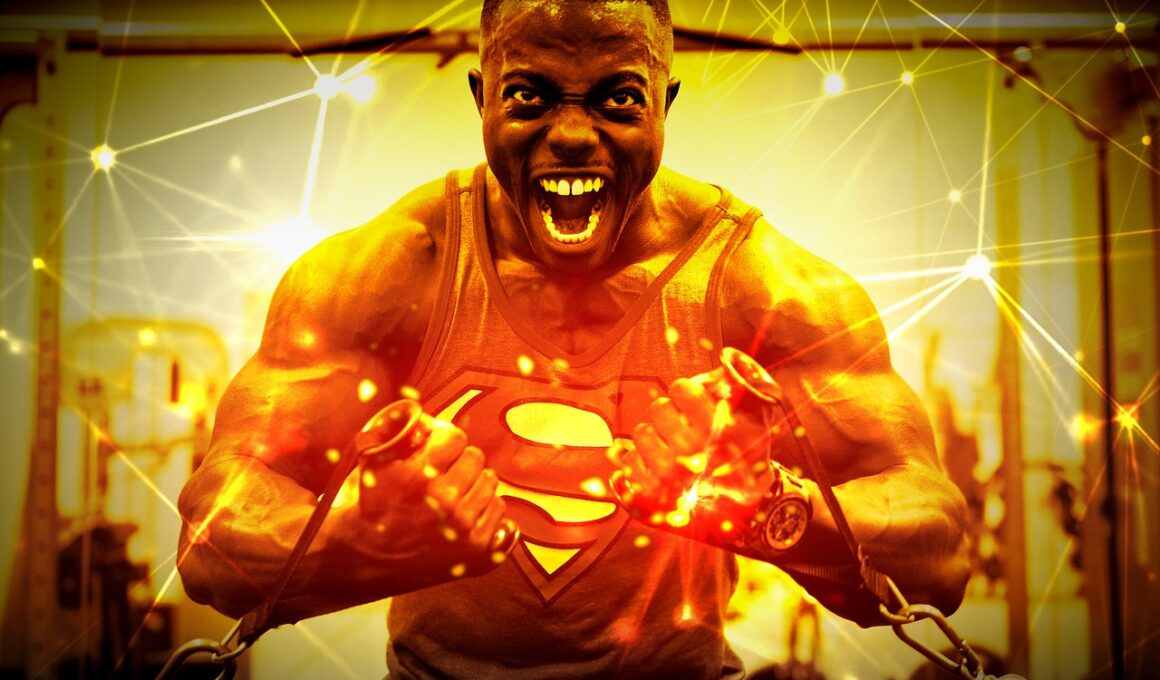Combining Posing Practice with Weight Training for Symmetry
Bodybuilding competitors often emphasize the significance of posing techniques in showcasing their training results effectively. Mastering poses is essential to highlight muscular symmetry and definition, allowing athletes to exhibit their hard work. While weight training builds muscle mass, practicing posing helps refine techniques, ensuring that competitors can flaunt their physiques to best advantage on stage. By integrating posing practice with weight training routines, athletes can maintain a holistic approach towards their preparation. Effective posing can elevate the overall impact of a performance, making judges more inclined to favor the performer based on visual appeal. Additionally, practicing poses also aids in building muscle control and awareness, which are crucial during competitions. This dual focus on both strength and presentation builds confidence that translates into improved stage presence. Hence, any bodybuilder seeking to step up their game should consider the balance between these two areas to ensure peak performance. Adopting an organized practice schedule can optimize efforts, leading to better results. Therefore, aspiring competitors must allocate specific times for dedicated posing practice to truly integrate it with their training regime.
Various techniques can enhance a bodybuilder’s posing practice, ensuring that every muscle group is displayed effectively. Firstly, establishing a solid foundation requires understanding the core poses commonly used in competitions, such as the front double bicep and side chest poses. Each pose emphasizes different muscle groups, so learning to master them can dramatically enhance an athlete’s appearance. Incorporating feedback from coaches and peers during practice sessions also contributes to improvement, allowing competitors to refine their techniques continuously. More importantly, employing a full-length mirror can help athletes recognize flaws and adjust their postures accordingly. Additionally, recording practice sessions can serve as a valuable tool for self-evaluation. Comparing videos over time shows progress, motivating bodybuilders to push harder. Creating a routine with a consistent focus on form and controlled movements will cultivate muscle memory, crucial during competitions. Moreover, performing muscle flexing routines between lifting weights can create a perfect blend of strength training and posing practice, fostering better muscle engagement. This combination enhances visual appeal while ensuring muscle growth stays evident through improved presentation. Therefore, being smart about integrating these practices makes a significant difference.
The Role of Muscular Symmetry in Bodybuilding
Achieving muscular symmetry is a paramount objective for any serious bodybuilder, as it plays a vital role in judging outcomes at competitions. Judges often evaluate competitors based on the balance between muscle groups and overall physique. As a result, a disproportionate body shape can lower the chances of securing a top ranking. Bodybuilders must, therefore, focus on symmetrical development while training. Incorporating specific exercises that target both the left and right sides of the body equally is essential for fostering this balance. For instance, performing unilateral exercises such as single-arm dumbbell rows or split squats can help correct any imbalances. In addition to weight training, regularly practicing poses that highlight symmetry ensures that bodybuilders recognize the need for balance visually. Identifying strong and weak points during posing sessions aids in crafting tailored training plans. This dedication to symmetry fortifies overall aesthetics and offers a polished appearance during competitions. Lifelike symmetry, combined with effective posing, captivates judges and enhances stage presence tremendously. Therefore, maintaining focus on symmetry while engaging in both training and posing practices must not be overlooked.
Most bodybuilding competitions assess not only physical size but also overall presentation, which is where posing techniques become invaluable. Practicing transitions between poses allows competitors to appear fluid and confident on stage, leaving a positive impression on judges and spectators alike. Additionally, learning how to blend poses with movements can establish an eyecatching theatricality that elevates a performance. Bodybuilders should dedicate time to work on seamless transitions to avoid awkward moments during routines. Another key aspect of posing relates to muscle engagement; an athlete must flex all visible muscle groups clearly and accurately. Hence, developing core strength can assist with maintaining poses for prolonged periods. A strong foundation not only supports stability but also aids in showing peak contraction effectively. Varying the intensity of practice sessions can also introduce an element of surprise into routines, keeping opponents and judges engaged. Progressively increasing these challenges can lead to improved form and adaptability. Therefore, making a habit of regularly practicing transitions, muscle engagement, and dynamic movements can pave the way for impressive performances. Validation from practice helps competitors shine brighter upon competition stage.”}, {
Feedback and Improvement in Posing Techniques
Receiving constructive feedback from coaches and experienced bodybuilders is essential to refining posing techniques effectively. Feedback serves as a crucial tool for growth in any discipline, especially in bodybuilding, where presentation can be as important as muscle size. Working with a coach who understands the intricacies of posing provides valuable perspectives that help competitors identify blind spots. Constructive criticism can illuminate unnoticed weaknesses or issues with form that could affect performance significantly. This feedback loop empowers athletes to adjust their posing, ensuring they look their best on stage. Additionally, participating in practice sessions with peers can offer insights and additional viewpoints. Engaging in sessions that include aspiring competitors in a collaborative environment can foster camaraderie and motivation. It’s also beneficial to establish a timeline that includes feedback opportunities, allowing athletes to assess their progress systematically. Utilizing a checklist can help outline specific areas that need attention based on feedback received. Maintaining a continuous cycle of practice, feedback, and improvement ensures that bodybuilders adapt and evolve in their technique with time. Embracing constructive criticism can finely hone their skills prior to competitions.
Pumping iron is crucial for bodybuilding success, but the connection between weight training and posing cannot be overstated. First and foremost, practicing poses while engaging muscles leads to enhanced muscle growth and improved definition. While bodybuilding practice focuses on size, implementing intentional posing in-between exercises can increase blood flow to specific muscle groups, promoting muscle hypertrophy. Additionally, a strong mind-muscle connection allows bodybuilders to focus on muscle engagement during training, ensuring optimal performance in both areas of competition. Regularly practicing poses creates an opportunity to ensure that proper techniques are maintained during training. By integrating weightlifting exercises and posing practice strategically, competitors can maximize their training sessions effectively. For instance, designating certain days for lift-and-pose sessions can provide balance while ensuring that both aspects of training receive ample attention. This distinct approach can prolong workout sessions’ effectiveness while enhancing overall aesthetic qualities. Moreover, competitors should track their progress through images and recordings to note changes and improvements, ensuring their integration remains purposeful. Hence, the synergy between posing and weight training leads to a more comprehensive preparation for bodybuilding competitions.
Conclusion: The Importance of Posing in Competition Success
Ultimately, combining posing practice with weight training has significant implications for competitive bodybuilders. Emphasizing the necessity of both aspects can yield remarkable returns, particularly during competitions where performance is crucial. Bodybuilders must understand that engaging in effective posing can immensely impact judging criteria, including stage presence and aesthetics. Furthermore, establishing symmetry and practicing various poses enhances visibility on stage, allowing athletes to stand out from their peers. Awareness of posing techniques can elevate an athlete’s performance level to new heights. Fundamentally, this dual focus fosters confidence, which boils down to effective training and posing plans. Competitors need to commit to their craft fully to achieve their desired outcomes. Ultimately, the blend of weight training and posing creates unique opportunities for success, allowing athletes to showcase their hard work while captivating judges. Therefore, embracing this integrated technique not only enhances physical preparations but also enriches the overall experience leading to competitions. Passion and dedication towards perfecting both posing and lifting will undoubtedly lead to impressive results on stage. With these strategies in place, aspiring competitors can truly shine in every competition.


